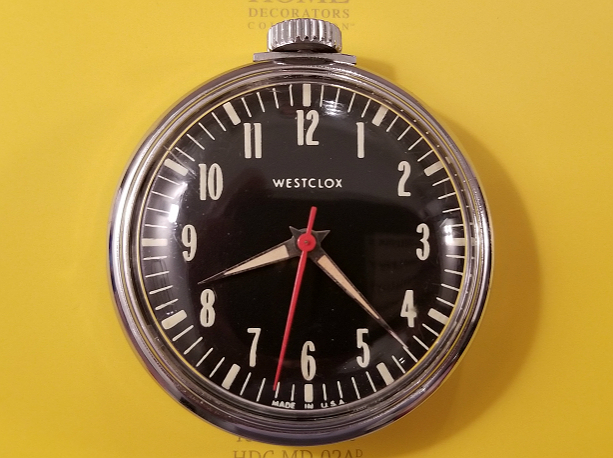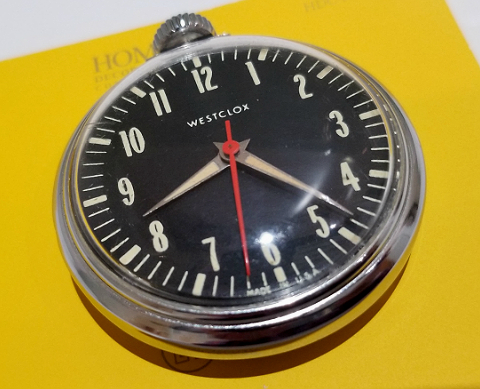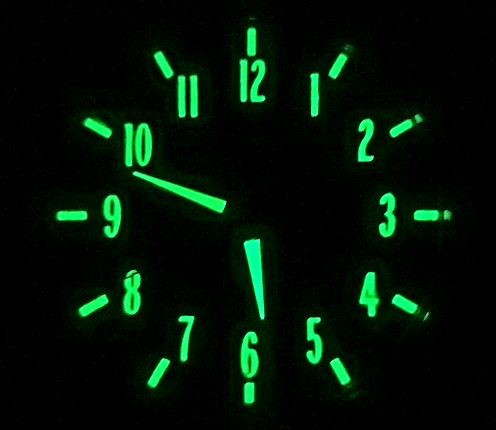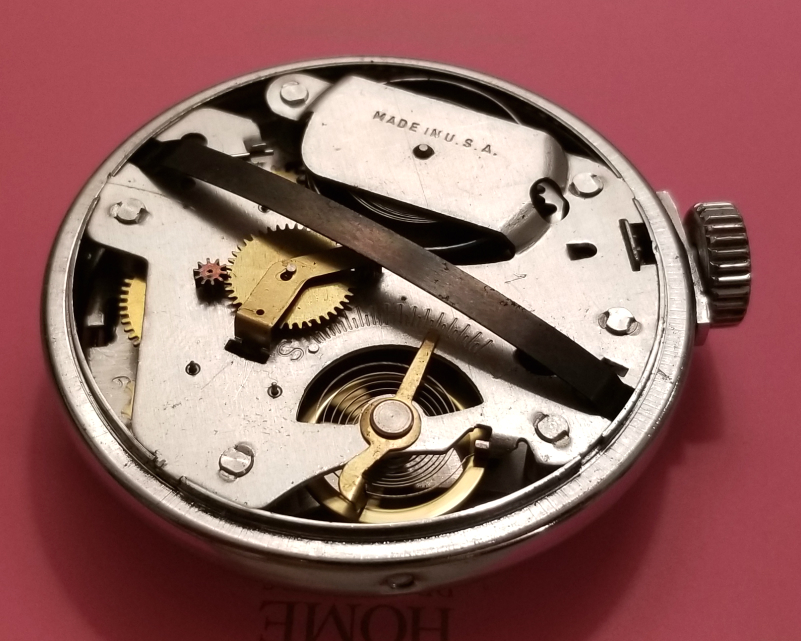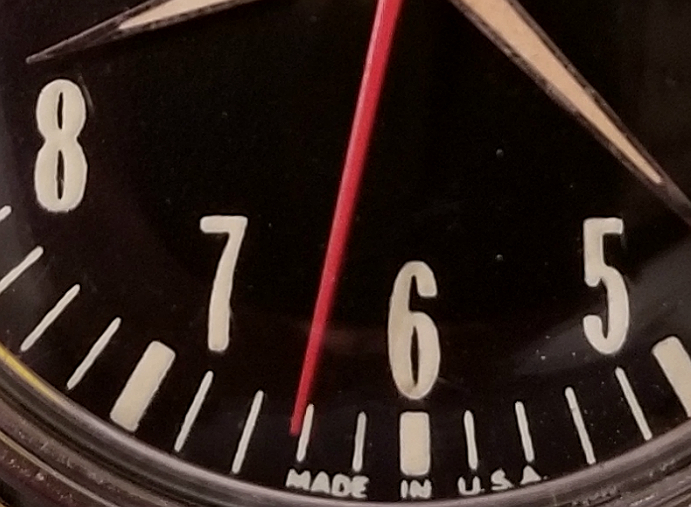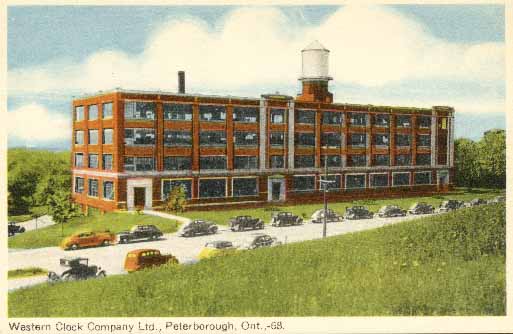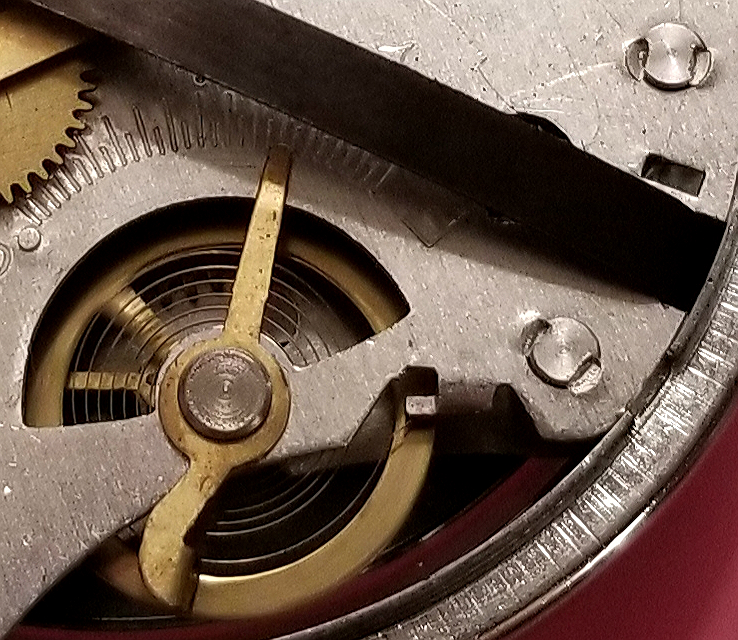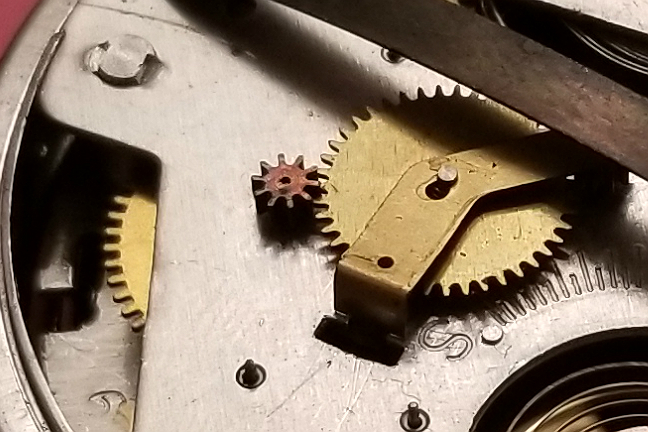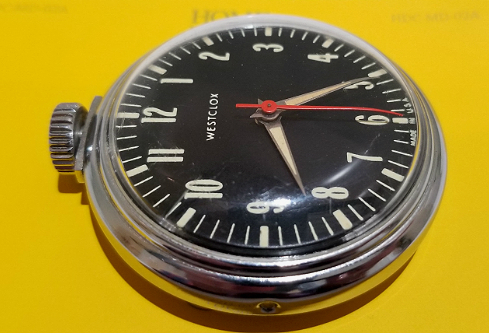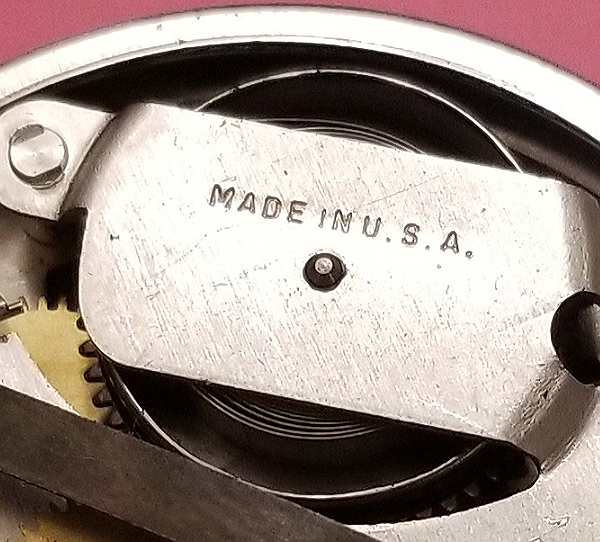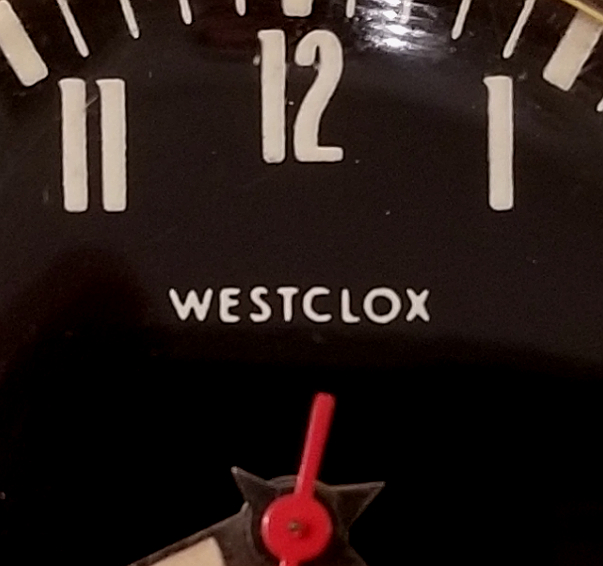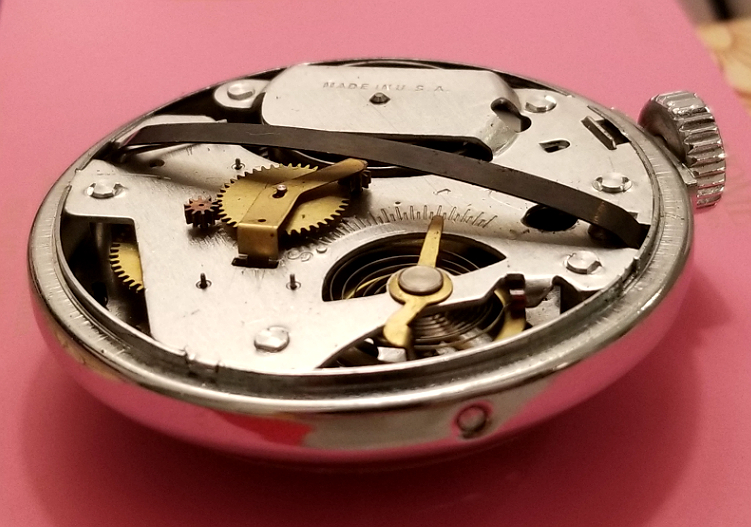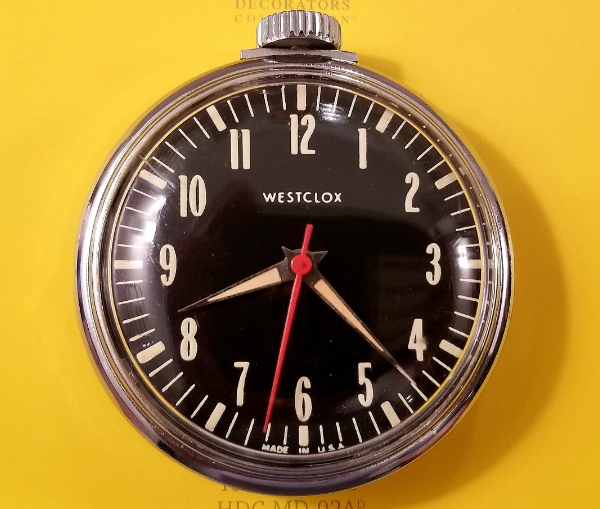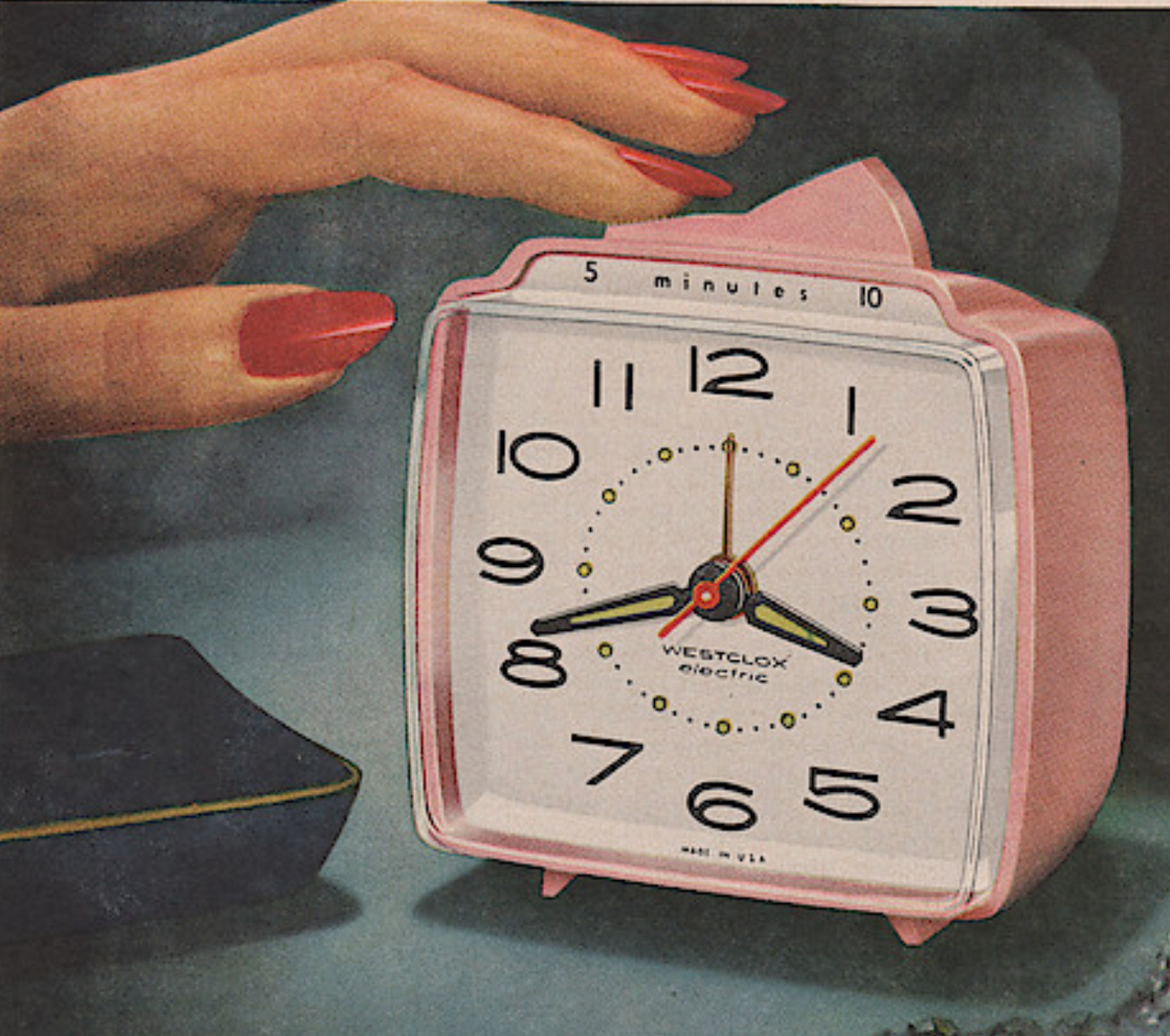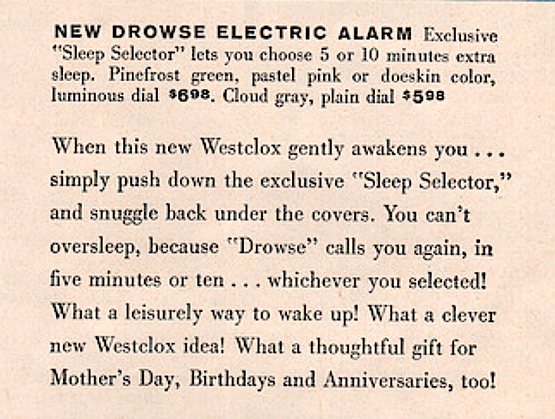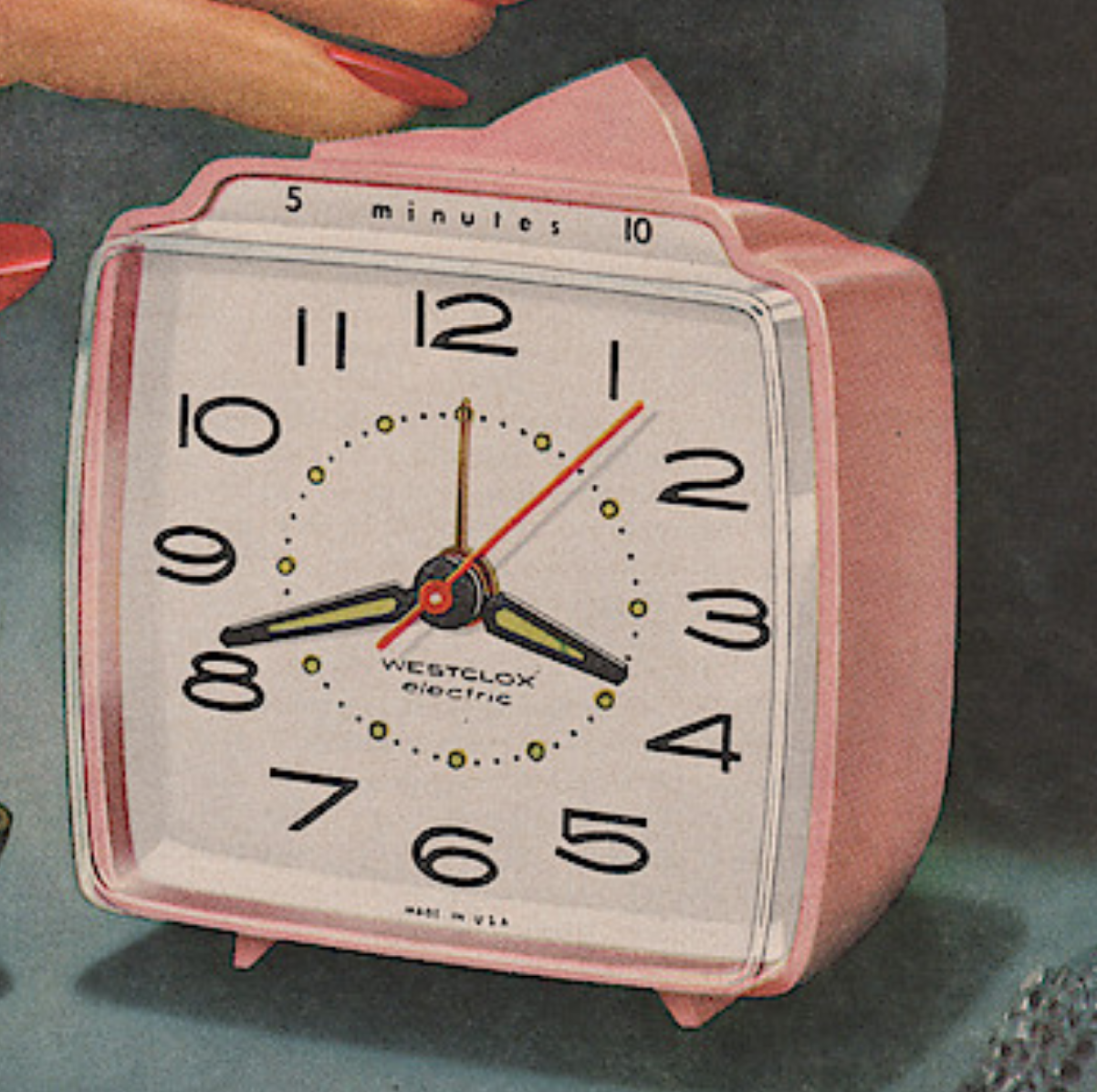WESTCLOX Pocket Watch Black Dial. 1950s?
Hi, this is Alan. (Contact info below). Thanks for looking. Here is a pretty nice looking WESTCLOX pocket watch, age unknown. I don't have too many PWs, but I found this one hard to pass up. The dial is homogeneously black, without fading or defects, and the dial markings are bright and sharp, a light cream-color. Hour and minute hands are similar. The red seconds hand is bright, with a slight spindle-shaped taper. This watch dial/hands combo is very high-contrast. This makes it visually pleasing to look at, and also functionally very effective.
This watch was almost certainly manufactured at this large factory works in La Salle - Peru, Illinois. More on this later.
/end
The light-activated luminous material is very good, probably better than on any other watch I have. At first I wondered if the hands and dial had radium-based material, but checking the watch with a radiation survey meter showed it was not radioactive.
The movement is pretty interesting. Keep in mind that these were quite inexpensive watches. The company that became "WESTCLOX" manufactured "dollar watches" back in those days, and throughout the remainder of the company's history seemed to manufacture mostly inexpensive, consumer-grade products. This watch was no exception. The movement is undecorated, not even really "finished" in any great way, made from stamped plates that are not held into place using screws, but are secured by rivet-like attachments. No criticism here; these methods and materials allowed the production of an inexpensive but reliable watch.
But it's loud! (I don't mind...) Below, see/listen to a short video showing the watch moving, ticking. Make sure to turn up the volume. Also, appreciate the back and forth "breathing" of the mainspring.
MADE IN USA. Almost certainly at the large factory in La Salle - Peru, Illinois, pictured above in the old post card. WESTCLOX also had a manufacture in Canada, in Peterborough, Ontario. Below is a picture of that factory. Here is some history of the Canadian production. In fact, if anyone is really interested, here is what appears to be a complete history of WESTCLOX.
I actually love the movement. Look at the unfinished edges of the plate, stamped out, and put into place. See the "rivets" or pegs that are holding the movement, instead of screws. I like the brass balance, and regulator. Nice view of the balance spring.
The mainspring barrel isn't fully covered on this side. Part of of the plate is bent, and then formed to provide a partial cover. You can see part of the mainspring, mostly wound up.
Angled side view of the movement. That black tension spring across the midline I think is so that when the caseback is replaced, it provides constant tension, preventing rattling around of the movement. I'm not sure what that little dimple is for, along the side of the case. There is another one, 180 deg. across.
It's a nice watch, and I like it more than I expected I would. It runs very well, keeps time. Loud ticking (did I say that.) The movement seems "low frequency," the ticks seems just that bit more further apart than what I'm used to. I still don't know when it was made. I say "1950s," but I wonder if it's 1960s or even 1970s. For 1950s, I would expect the dial to have radium, which it does not. If anyone knows, please let me know.
Thanks for reading.
I hope you will like it.
Alan
Contact:
Website: Alan's Vintage Watches.
EXTRA:
The progenitor of the "snooze" alarm system was "drowse," from WESTCLOX, 1959. From the below ad.
Tiny, subtle serifs at the top of the numeral 1.
